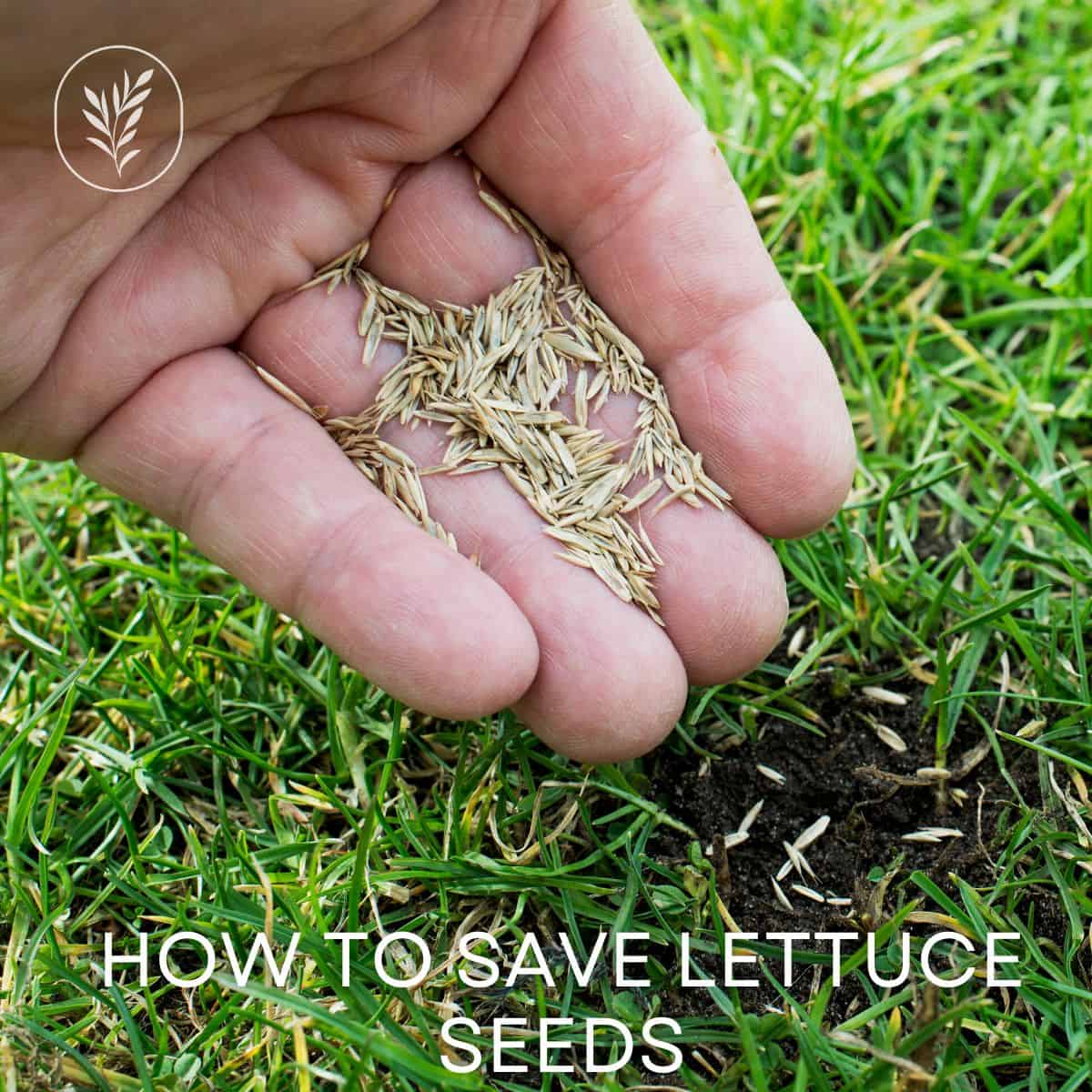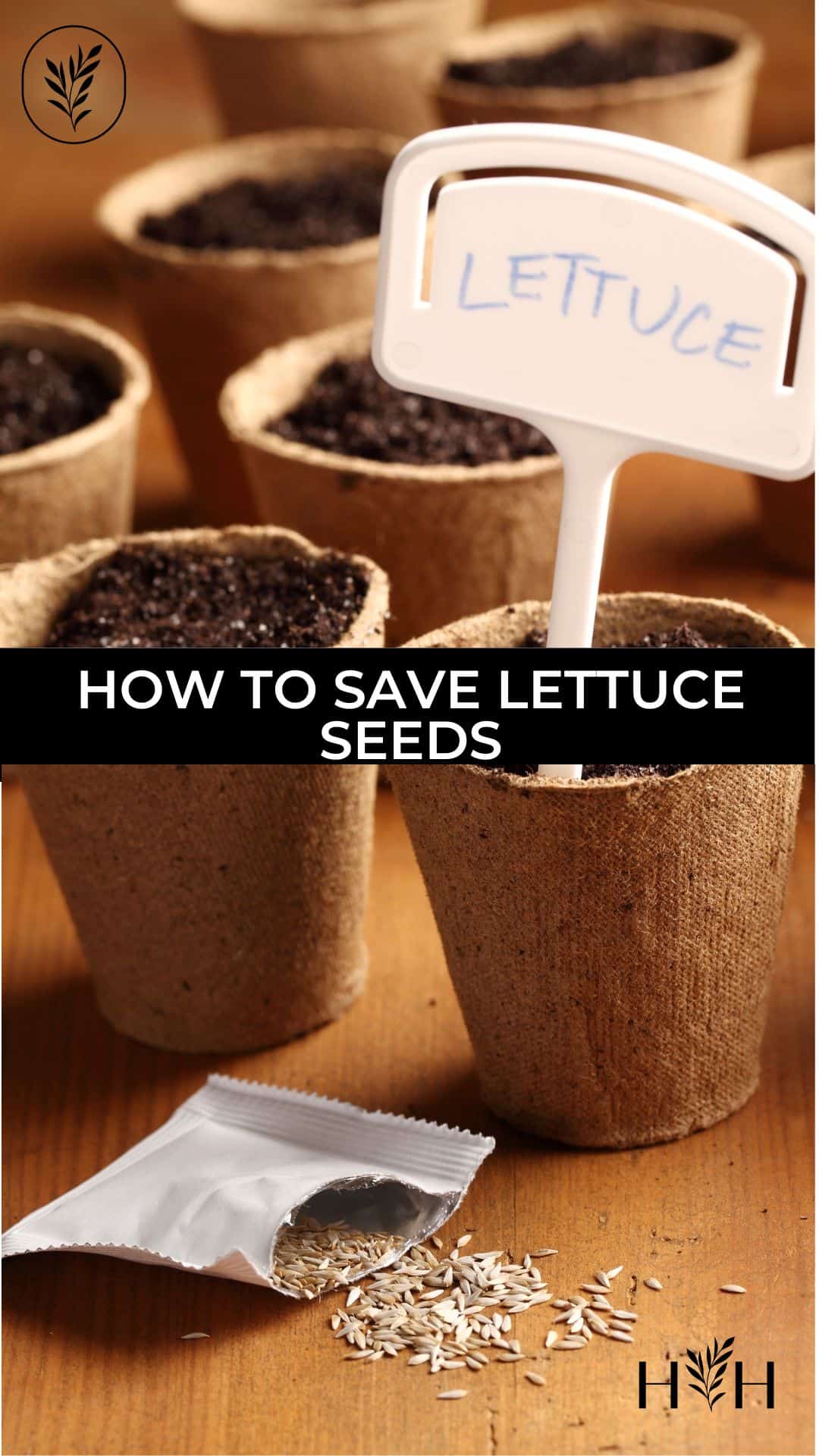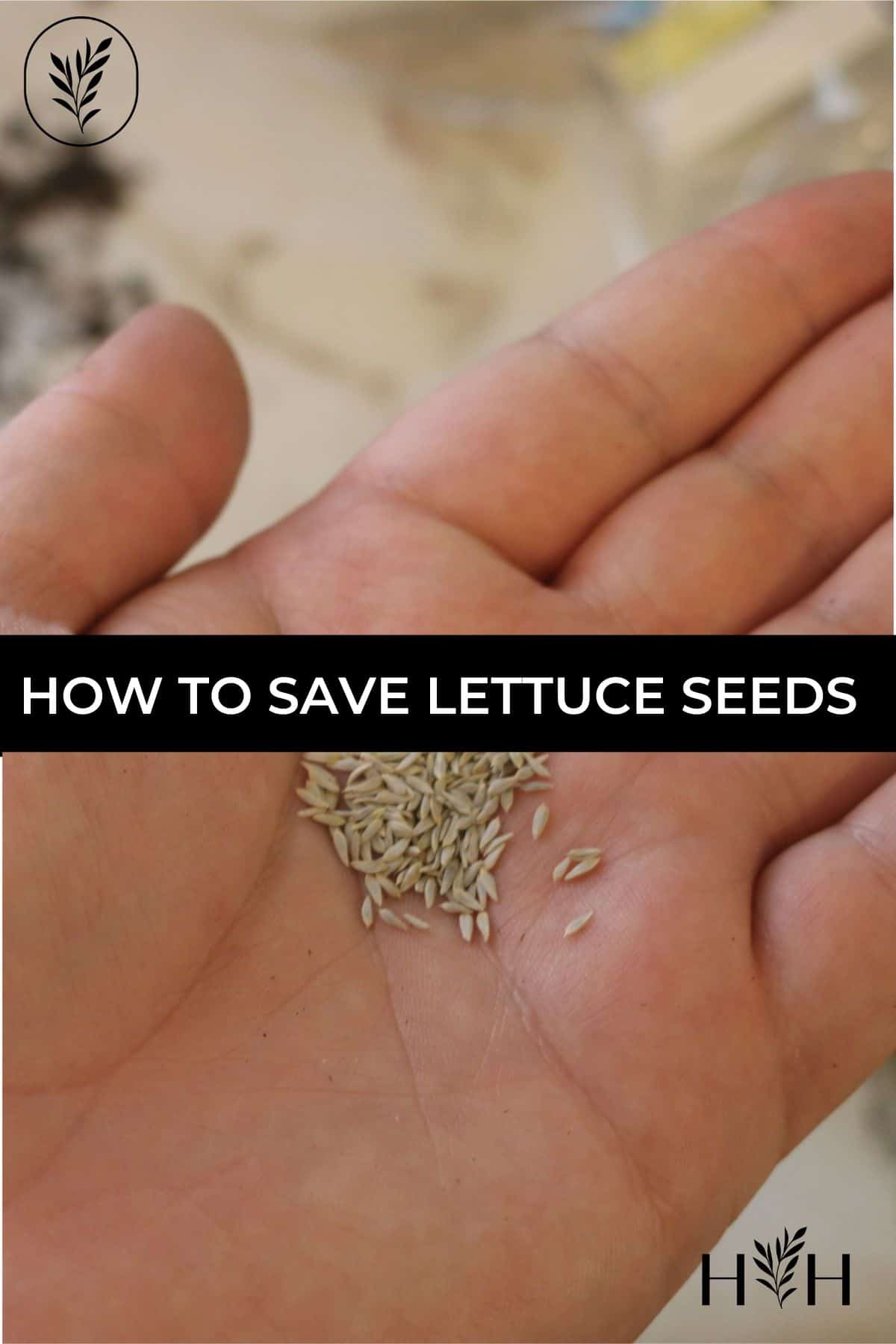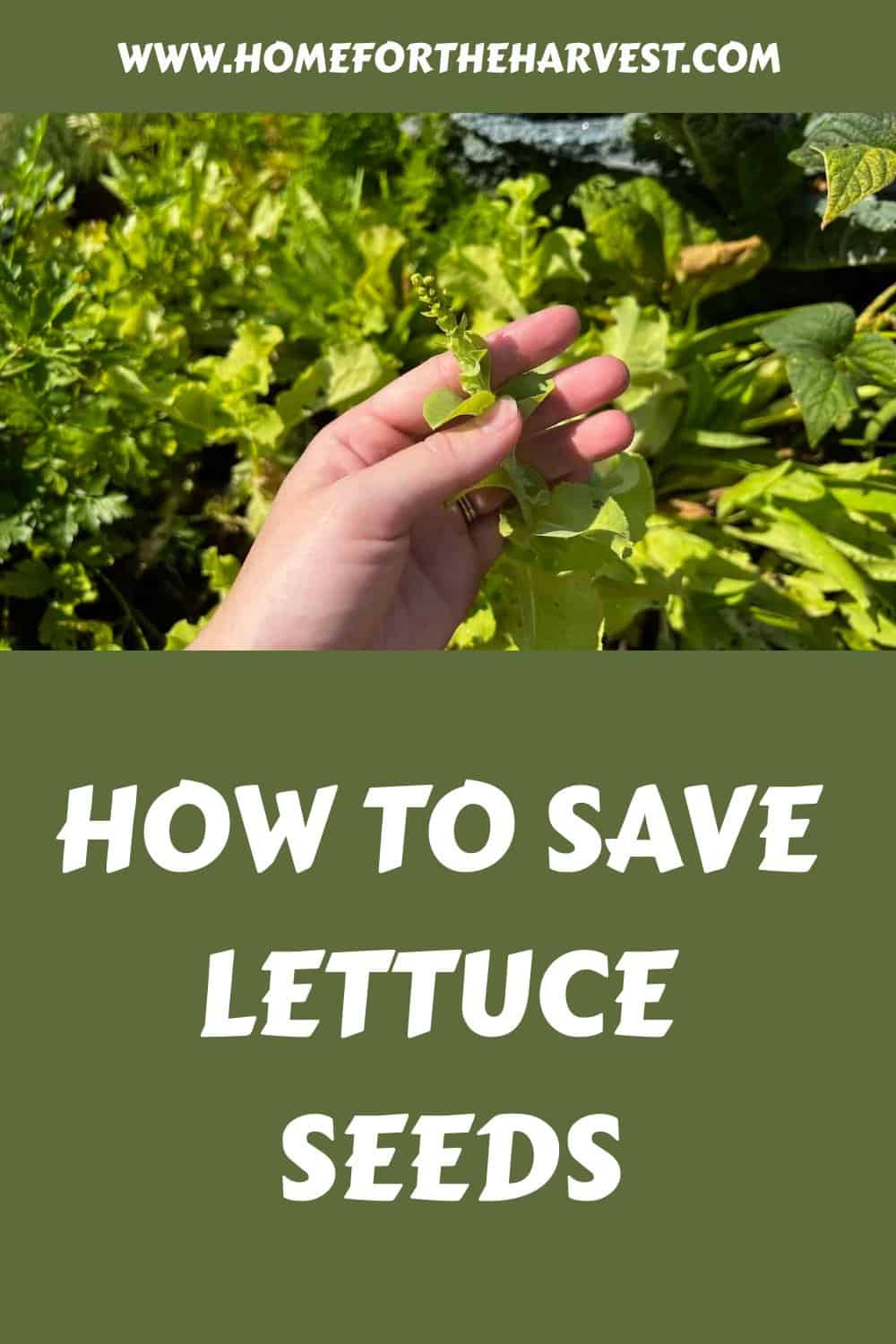Saving lettuce seeds is a wonderful gardening project for beginners and experienced gardeners alike.
To save lettuce seeds, start by planting several dozen lettuce plants as early in the spring as possible. Choose the last plants to flower for seed saving and stake up the flower stalks. After they bloom, the flowers wilt and develop seeds within 2-4 weeks. Hand-pick the dried seeds when the seed heads are dry enough to crumble. Hang the seeds in a mesh bag or scatter them over a screen to dry. Store in a cool, dry, dark location for 1-4 years.
Read on to learn all about how to save lettuce seeds!
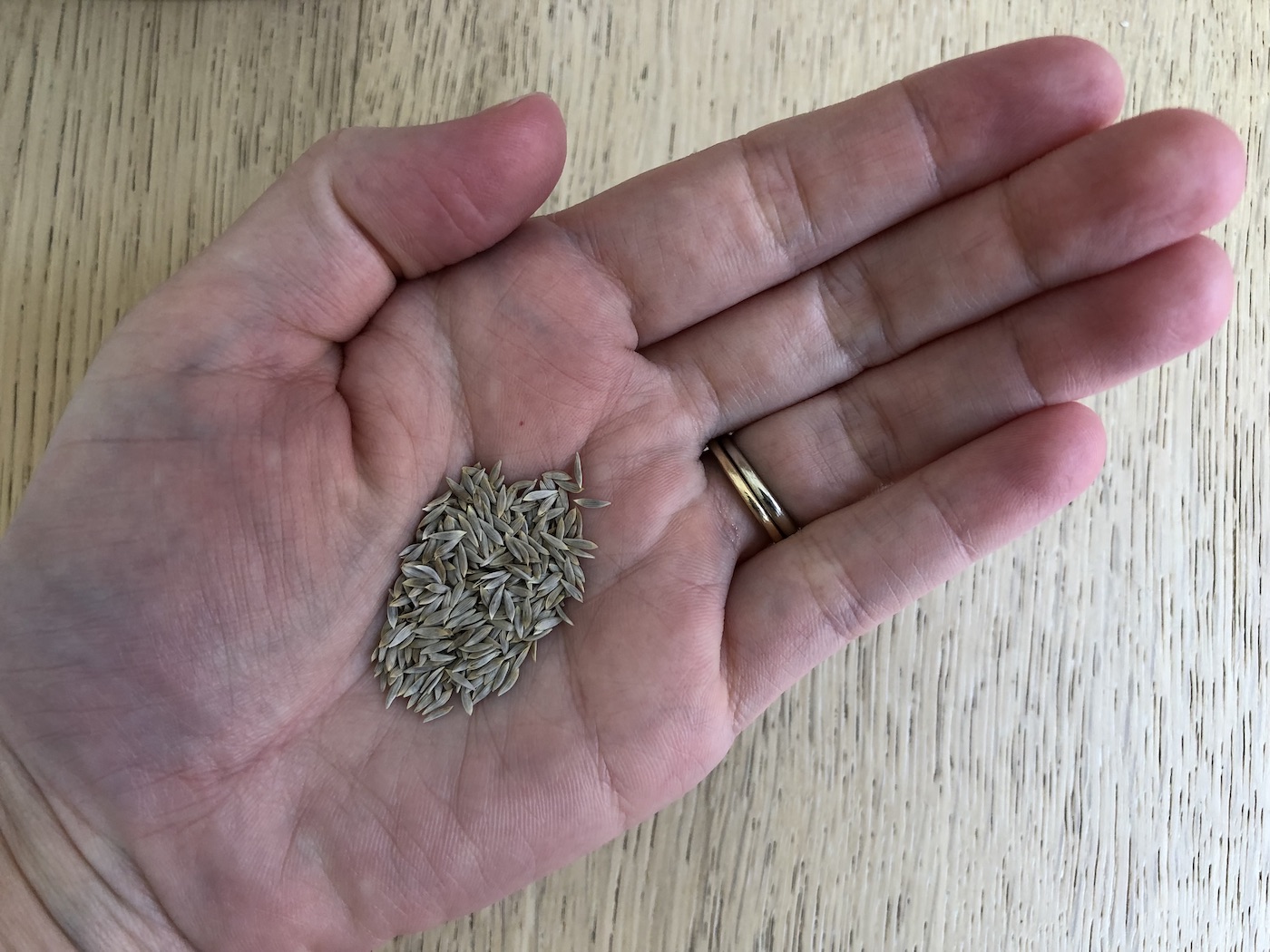
Introduction to saving lettuce seeds
Lettuce seeds are easy to collect. All you need is a little patience and some basic equipment. These plants usually self-pollinate and don’t need any sort of hand pollination. They also don’t need vast isolation distances between varieties.
Lettuce (Lactuca sativa) is in the Asteraceae family (Aster family), which also includes sunflowers, zinnias, and many other favorites. Plants in the Aster family, like lettuce, have perfect flowers. Lettuce plants inbreed and usually self-pollinate, making them a good choice for beginner seed savers.
Lettuce is an annual plant (lifespan of under one year) that flowers and sets seed during long summer days. Let’s learn how to harvest lettuce seeds!
Planting lettuce for seed saving
If you’re planning on seed saving from the lettuce in your garden, there are a few things to keep in mind beyond the basics of growing lettuce plants. You need quite a few plants, but different varieties need to be isolated from one another.
Plant a minimum of 1-2 dozen lettuce plants of one variety to ensure you have a large quantity of viable seed that is genetically diverse. See below for a list of open-pollinated varieties that work well for seed saving. You’ll want to collect viable lettuce seeds from the final 10 plants to flower.
Try to plant the lettuce plants out as early as possible. The point of early planting is so that the lettuce will be flowering in midsummer when the weather is dry and hot, and the seed capsules can dry out quickly on the flower stalks.
Lettuce plants are inbreeding and are self-fertile. They don’t need another variety of lettuce for cross-pollination. If you’re planning on saving true-to-type lettuce seeds, isolate the group of seed plants from other varieties by a minimum of 10 feet (3m). Cross-pollination with other varieties may occur when insects visit the short-lived flowers, so you can cover the flower buds with a blossom bag before they bloom.
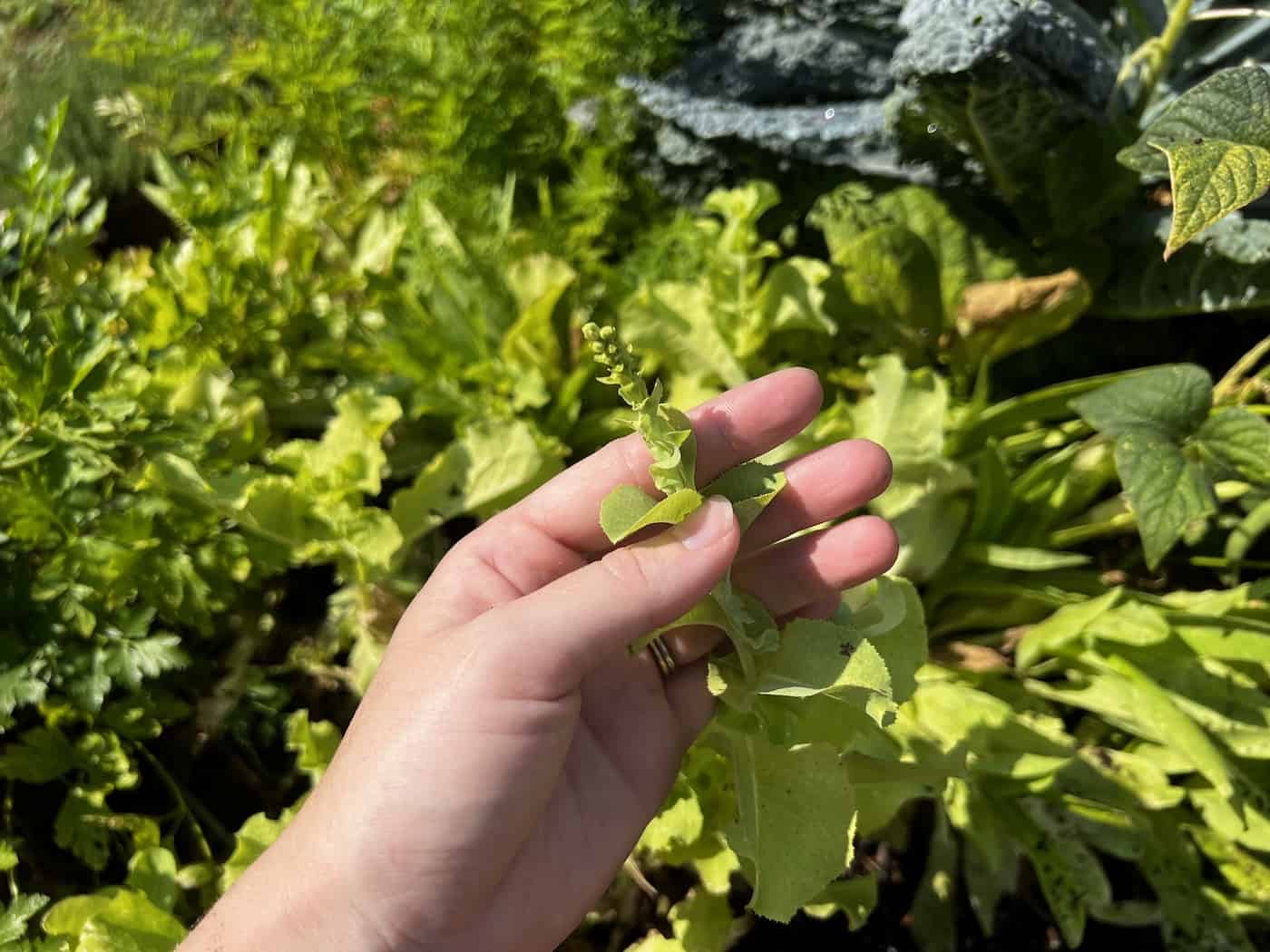
Choose an open-pollinated variety
Make sure the lettuce variety you select is open-pollinated. Seeds saved from hybrids (F1 crosses) will not save true to type, even when isolated from other varieties.
Here are some great open-pollinated lettuce varieties:
- Buttercrunch lettuce
- Black-Seeded Simpson lettuce
- Little Gem lettuce
- Amish Deer Tongue lettuce
- Red Sails lettuce
- Marvel of Four Seasons lettuce
- Salad Bowl lettuce
- Red Salad Bowl lettuce
- Oak Leaf lettuce
- Tom Thumb mini lettuce
- Parris Island cos romaine lettuce
These heirloom lettuce varieties and other open-pollinated favorites are perfect for saving seeds and home seed production.
Companion planting for seed saving
Lettuce plants make excellent companions for many garden vegetables. Some good crops to plant alongside lettuce include:
- Parsley
- Peas
- Radishes
- Spinach
- Cilantro
- Strawberries
- Zucchini
Growing lettuce for seed saving
To grow lettuce plants for seed saving, start by spacing the plants twice as far as they would be spaced for compact heads. This usually means leaving one head per foot so they have lots of room for growth and air circulation.
Lettuce flowers on tall stalks are best supported when planning on seed saving. Sometimes the stalks can’t find their way through tightly-curled varieties like Iceberg that have dense heads, and you may have to cut through the leaves at the base to allow the stalk to grow up through the plant. You can stake individual stalks with bamboo stakes or stretch mesh netting over the entire bed to hold up all the stalks at once.
Water the plants deeply and regularly to prevent stress. Lettuce grown for seed saving doesn’t require extra fertilizer.
Varieties of lettuce with tightly wrapped heads, such as many varieties of Crisphead-type lettuce, may grow so tightly that the flower stalk has difficulty pushing up through the head to bloom. For these varieties, growers commonly cut a slit in the top of the head or peel/twist away some of the leaves to allow the stalk to grow up through the center.
In some climates, wind can topple the tall lettuce plants and dislodge the seeds as they develop. If this is a problem in your area, certainly use a stake, but also consider adding a lettuce seed-saving bag, which will help minimize seed loss. If rain is forecasted while the seeds are developing, you may wish to cover the plants to keep the rain from knocking the seeds out of the capsules.
Choosing lettuce to save seeds from
When saving lettuce seeds, do not save seeds from the first plants to flower, as doing so would select for plants that bolt early. Choose plants that flower later and that have a healthy, robust appearance. You’ll also want to taste leaves along the way so you can choose the tastiest plants with the best-textured leaves.
How to save seeds from lettuce plants?
When the flowers wilt and turn brown, it’s time to harvest lettuce seeds. Seed maturity in the pods usually happens 2-4 weeks after the plant blooms. Not all of the seeds ripen at once.
Gently rub the dried flower heads between your fingers so the dry seeds fall out of the capsules. Some seeds may not yet be dry enough to fall out. You can come back later and get the remaining seeds.
Collect lettuce seeds in a bowl, bucket, paper bag, or another container that can hold very small seeds. Always hold your collection bowl under the flowers to catch any tiny seeds that fall through your fingers.
An alternative way to save the seeds is to pull up entire plants. Wash the soil off the roots. Tie a string to the end with the roots and hang them upside down to dry. Put a paper bag over the flower heads to catch drying seeds as they fall. Once the plant is dry, you can gently tap the seed capsules against the inside of the paper bag to release the remaining seeds.
Lettuce seeds often have a lot of chaff, seed pod bits, and other plant debris that comes along with them. You can use a seed cleaning sieve to remove larger bits and even blow gently over the seeds to lift up fluffy chaff away from the seeds.
Once the seeds are dry and cleaned, label them and store them in an airtight container in a cool, dark place. They should stay viable for 3-4 years if stored properly, although they can last only 1-2 years in less-than-ideal conditions.
Storing lettuce seeds
For the longest viable seed life, keep lettuce seeds away from moisture, warm temperatures, and direct sunlight. Look instead for dry, cool, dark storage locations.
Packaging lettuce seeds
Start by packaging the clean, dry seeds in a small package. Here are some good options for storage containers:
- Paper envelopes
- Plastic baggies
- Glass wide-mouth mason jars
Press very lightly when closing the package to avoid crushing the seeds. Try not to leave too much air in the package, but don’t press out all of the air either (and don’t vacuum seal seeds).
Label your lettuce seeds before putting them into storage. Include the variety name, the date the seeds were saved, and tips for cultivation.
Seed storage containers
Once the seeds are packaged for storage, all the packages can be placed into a container. This can be anything from a repurposed plastic bin or wooden box to one of these fancier options:
- Library card drawers
- Photo storage cases
Airtight containers like large Ziplocs, plastic tubs, or mason jars work well for small seeds like lettuce. If you can find an airtight tub that is a solid color, that will help keep light away from the seeds. Wooden library drawers – while not airtight – do an excellent job of keeping light out while maintaining organization.
To reduce humidity, you can tuck a silica gel pack from other packaging or include a tablespoon of dry rice. These drying agents can absorb excess moisture.
Seed storage conditions
Lettuce seeds last the longest when stored in ideal conditions. This generally means a location with low humidity (but not zero humidity), no light, and a cool temperature just above freezing.
Here are the ideal conditions for home storage of lettuce seeds:
- An air temperature of 32°-41°F (0°- 5°C)
- An air humidity of less than 50%
- Near-total darkness
- Free from pests like mice that like to feast on seeds
Common places to store seeds include unheated closets, dry and cool basements, and the crisper drawer of the refrigerator. If storing in a place with variable humidity (like the fridge), be sure to use an airtight container and consider popping a humidity meter in with your seeds.
Lettuce seed lifespan
Lettuce seeds usually last for 1-4 years when properly stored in a cool, dry place.
Planting lettuce seeds
Lettuce seeds germinate in soil temperatures between 32ºF and 85ºF. They prefer cooler temperatures typical of spring and fall to the heat of summer. Germination is quite slow at the cooler end of this range, so lettuce seeds are usually planted at an optimum soil temperature of 60ºF to 75ºF.
Viable lettuce seeds usually take about a week to germinate in 50ºF soil but may take 2+ weeks if soil temperatures are near freezing. That said, lettuce is most easily sown indoors and transplanted into the garden as baby seedling plants. Lettuce usually takes only 2-4 days to germinate at room temperature.


